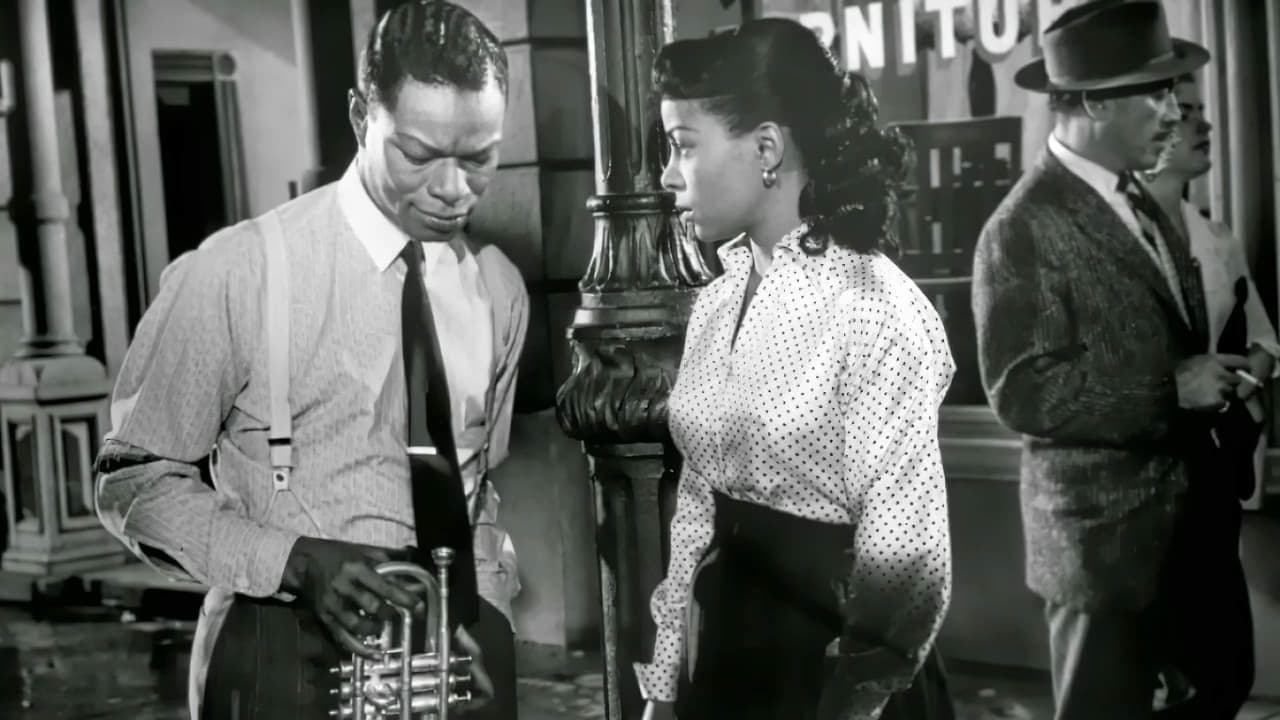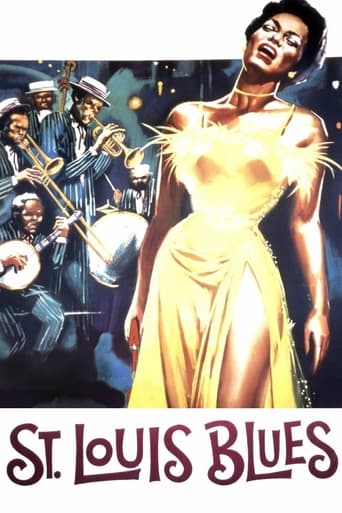

Nat King Cole stars in "St. Louis Blues," a short yet loving tribute to W. C. Handy. Like most Hollywood biopics, I'm sure this film barely scratches the surface of Handy's life and career, but it captures the essence of W.C. Handy, the expression of one's self and heart through music, through song. Despite the pressure to follow his minister father's footsteps, he had to go his own way, even if he was disowned. Juano Hernandez plays his narrow-minded father, who dismisses any music other than plain piano church music. This is a continual theme and plot of the movie. Will W.C. ever get or feel his father's approval? But what makes the film so great in an otherwise straightforward script is the cast and performances involved. Eartha Kitt, as a nightclub singer and a contact Will uses for advancement in his career, gets most of the screen time when Nat is not singing, and they both sing quite differently in their ways, but stop the show equally. Also outstanding is the presence of the great gospel vocalist Mahalia Jackson, who can stir one up with her prayer-like style. And, then there's Ella Fitzgerald who makes a brief appearance as herself who apparently influenced W.C. Handy. And, then there's Cab Calloway, who doesn't get to sing, but adds much as an opportunist who uses W.C. Handy for his own devices. And Ruby Dee is on hand as W.C.'s girlfriend. And, Ruby is really jealous of Eartha. And, lastly, one of my favorites of all time, the inimitable Pearl Bailey, with her sassy self, as W.C.'s aunt. Both Mahalia and Pearl did not sing enough to suit me, but this was about W.C. Handy. For all these people and the sheer talent in one place, you can't get much better. Granted the film is too short, but maybe you can just watch it over and over. "St. Louis Blues" and its stars are worth the trouble to find it. Do it today.
... View MoreAfter several years of only seeing the last hour of this movie, I finally watched the whole thing on Netflix Streaming. Nat King Cole plays the famous composer W.C. Handy and he's not bad. I especially was touched when his character's blindness caused him to bump into things. And non-musicians Juano Hernandez as his father Reverend Charles Handy and Ruby Dee as girlfriend Elizabeth, respectively, certainly hold their own when sharing scenes with singers Pearl Bailey and Eartha Kitt. Cab Calloway also effectively conveys his role as a hustling businessman though unlike the others, he doesn't do any singing which is too bad. The actual story is probably more colorful than what was presented here but it wasn't bad for what it was. And how enjoyable to see not only Ms. Bailey and Kitt do their thing but also Ella Fitzgerald and Mahalia Jackson, too! And of course, Nat King Cole looks cool every time he's at the piano warbling Handy's tunes. It was also interesting to see Billy Preston as a young boy at the beginning as the child Handy and such musicians like Barney Bigard, Teddy Buckner, George "Red" Callender, Lee Young, and George Washington sitting in the band. Really, all I'll say now is St. Louis Blues is worth seeing for the number of musical icons in one film that are presented here.
... View MoreST. LOUIS BLUES (1958) starts out fine but markedly tires. The direction is all on one level: restrained. Perhaps it was meant to show that blacks were religious, cultured, "civilized," as opposed to the raucous, carousing, loose-living floozies and crapshooters that Hollywood usually portrayed.The movie cries out for color. But someone probably figured that with a cast that's all black anyway, why waste the more expensive film stock!There are other contradictory elements as well. The film wants to be "progressive" and promote jazz. But it also does not want to alienate its religious audience. In that respect, the best thing it does is insert Mahalia Jackson periodically to pick up the spirit. But to have it both ways, when W.C. Handy goes blind and returns to the church, the filmmakers restore his sight (as if God approves of his giving up jazz) before turning him loose again to find fame and acceptance with a symphony orchestra playing the title tune (as if God, in the end, has come down on the side of jazz, as long as it's played as classical music). In real life, of course, W.C. Handy died blind.Nat Cole is admirable, but I suspect that his too low-keyed performance is the fault of the director holding everyone in check. Toward the end of his life, W.C. Handy frequently made guest appearances on TV variety shows. He was polite and mild mannered, almost to the point that you wondered how he could have written such a wide range of songs. In contrast, Eubie Blake at age 100 displayed a far more open and lively personality.Although the movie is 105 minutes long, a studio power must have misguidedly cut out some musical numbers. Why would Paramount hire Cab Calloway and give him featured billing but no song to sing? His character flimflams Handy out of the rights to "Yellow Dog Blues," so he must have done a lively musical performance of it in his club. And why invent the character of Aunt Hagar for Pearl Bailey if no one is going to play and sing "Aunt Hagar's Blues"?Meanwhile, where was the greatest proponent of Handy's music (as well as its best interpreter), Louis Armstrong? He does have a role in THE FIVE PENNIES, the Technicolor biopic of "Red" Nichols (Danny Kaye) that Paramount released the following year.In October 1954 Columbia Records released one of its biggest selling jazz LPs, "Louis Armstrong Plays W. C. Handy."According to George Avakian's jacket essay, in the Times Square editing studio "a handsome old gentleman (of 75 years) sat listening to the tapes of this record, tears streaming from his sightless eyes."'I never thought I'd hear my blues like this,' W. C. Handy said.... 'Nobody could have done it but my boy Louis!'"At some point, it seems, Paramount decided to studiously avoid truly lively interpretations of the songs. At least they could not completely repress the vivaciousness of Pearl Bailey and Eartha Kitt. Besides Technicolor what this movie needs most is a rousing finale with costumed Katherine Dunham dancers.Nowadays Hollywood should forget about remaking great movies. Instead it should concentrate on movies that could have been great.
... View MoreThe film's story line has little in common with Handy's actual life, and some Hollywood writers were brought in to "improve" a few of Handy's lyrics. In other words: don't base your term paper on this picture, unless you're demonstrating how Hollywood can't leave history well enough alone. (Would you be surprised to learn that Handy's real story is more colorful than this -- literally -- black and white movie? Didn't think so).On the other hand, the cast is sensational -- Kitt and Bailey, particularly, with a nice early sequence featuring Billy Preston as young Bill -- and the music is well played and sung. Ella Fitzgerald and gospel great Mahalia Jackson are featured briefly, which is another plus.If you ignore the weaknesses in the (at best) hackneyed script and try not to wince at the stereotyped characters, the film is nicely directed.I enjoyed it a lot, almost in spite of itself.
... View More